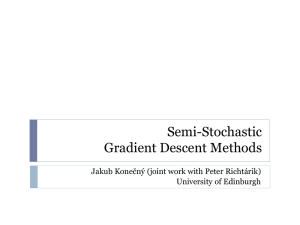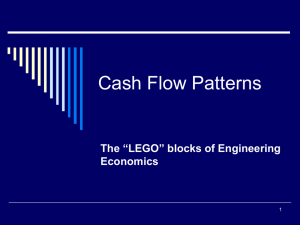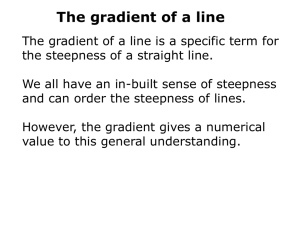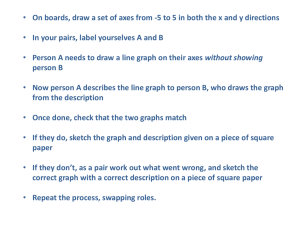Semi-Stochastic Gradient Descent Methods
advertisement
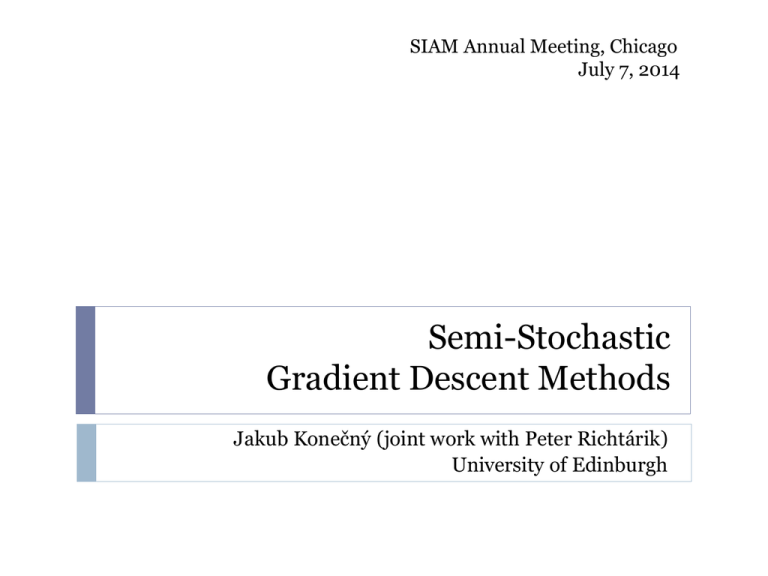
SIAM Annual Meeting, Chicago July 7, 2014 Semi-Stochastic Gradient Descent Methods Jakub Konečný (joint work with Peter Richtárik) University of Edinburgh Introduction Large scale problem setting Problems are often structured Structure – sum of functions is BIG Frequently arising in machine learning Examples Linear regression (least squares) Logistic regression (classification) Assumptions Lipschitz continuity of derivative of Strong convexity of Gradient Descent (GD) Update rule Fast convergence rate Alternatively, for accuracy we need iterations Complexity of single iteration – (measured in gradient evaluations) Stochastic Gradient Descent (SGD) Update rule a step-size parameter Why it works Slow convergence Complexity of single iteration – (measured in gradient evaluations) Goal GD SGD Fast convergence Slow convergence gradient evaluations in each iteration Complexity of iteration independent of Combine in a single algorithm Semi-Stochastic Gradient Descent S2GD Intuition The gradient does not change drastically We could reuse the information from “old” gradient Modifying “old” gradient Imagine someone gives us a “good” point Gradient at point , near , can be expressed as Gradient change We can try to estimate Approximation of the gradient and Already computed gradient The S2GD Algorithm Simplification; size of the inner loop is random, following a geometric rule Theorem Convergence rate For any fixed , can be made arbitrarily small by increasing Can be made arbitrarily small, by decreasing How to set the parameters ? Setting the parameters Fix target accuracy The accuracy is achieved by setting # of epochs stepsize # of iterations Total complexity (in gradient evaluations) # of epochs full gradient evaluation cheap iterations Complexity S2GD complexity GD complexity iterations complexity of a single iteration Total Related Methods SAG – Stochastic Average Gradient (Mark Schmidt, Nicolas Le Roux, Francis Bach, 2013) Refresh single stochastic gradient in each iteration Need to store gradients. Similar convergence rate Cumbersome analysis MISO - Minimization by Incremental Surrogate Optimization (Julien Mairal, 2014) Similar to SAG, slightly worse performance Elegant analysis Related Methods SVRG – Stochastic Variance Reduced Gradient (Rie Johnson, Tong Zhang, 2013) Arises as a special case in S2GD Prox-SVRG (Tong Zhang, Lin Xiao, 2014) Extended to proximal setting EMGD – Epoch Mixed Gradient Descent (Lijun Zhang, Mehrdad Mahdavi , Rong Jin, 2013) Handles simple constraints, Worse convergence rate Experiment (logistic regression on: ijcnn, rcv, real-sim, url) Extensions Sparse data For linear/logistic regression, gradient copies sparsity pattern of example. But the update direction is fully dense SPARSE DENSE Can we do something about it? Sparse data Yes we can! To compute , we only need coordinates of corresponding to nonzero elements of For each coordinate , remember when was it updated last time – Before computing in inner iteration number , update required coordinates Step being Compute direction and make a single update Number of iterations when the coordinate was not updated The “old gradient” Sparse data implementation S2GD+ Observing that SGD can make reasonable progress, while S2GD computes first full gradient (in case we are starting from arbitrary point), we can formulate the following algorithm (S2GD+) S2GD+ Experiment High Probability Result The result holds only in expectation Can we say anything about the concentration of the result in practice? Paying just logarithm of probability Independent from other parameters For any we have: Convex loss Drop strong convexity assumption Choose start point and define By running the S2GD algorithm, for any we have, Inexact case Question: What if we have access to inexact oracle? Assume we can get the same update direction with error : S2GD algorithm in this setting gives with Future work Coordinate version of S2GD Access to Inefficient for Linear/Logistic regression, because of “simple” structure Other problems Not as simple structure as Linear/Logistic regression Possibly different computational bottlenecks Code Efficient implementation for logistic regression available at MLOSS (soon)
